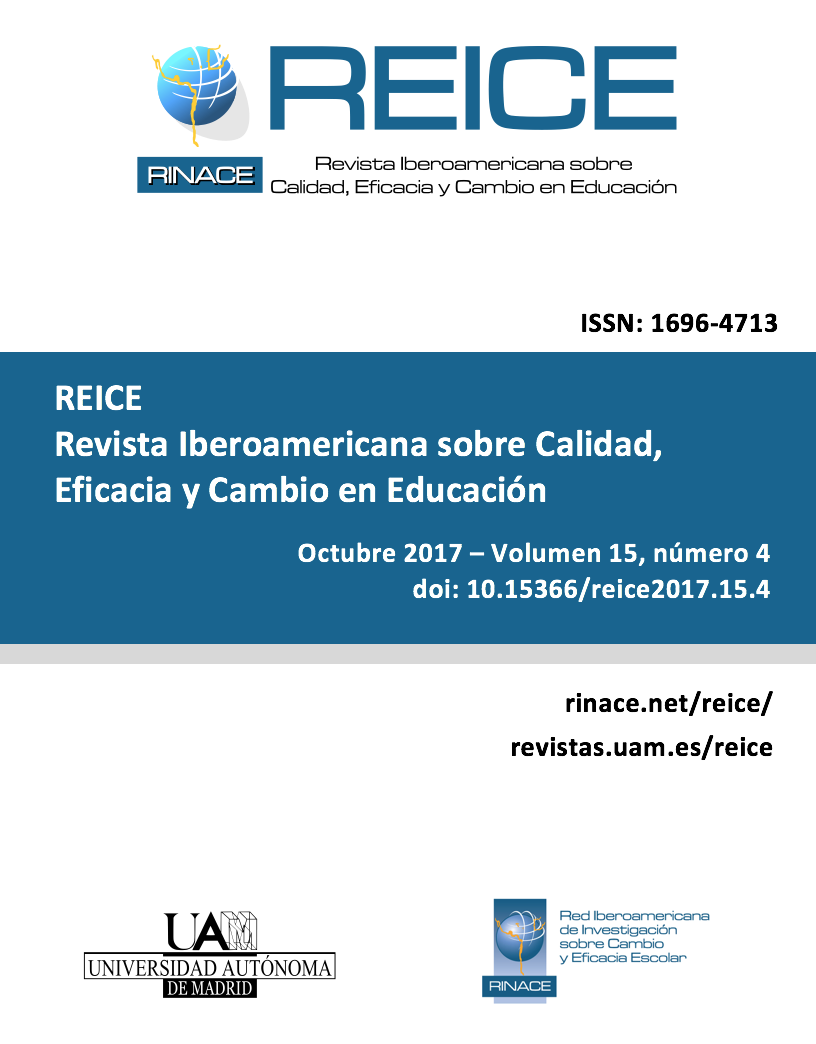Welfare Matrix, Formal Schooling, and Intergenerational Social Mobility in Contemporary Uruguay
Keywords:
Social mobility, Formal education, Social welfare, Educational systems, Basic education.Abstract
The welfare matrix and the investment in human capital are much related inside the compulsory formal schooling. Both have a remarkable role in the odds of ascending intergenerational social mobility; However, it is difficult to hierarchize the role of each in the process of flexibility –or not– of the structure. The article proposes to analyze the hierarchy of the proposed link in relation to the ascending intergenerational social mobility. For this, three historical moments are chosen in Uruguay with different welfare regimes, different patterns of upward intergenerational social mobility, and different compulsory formal education levels. The methodological strategy proposes to test different hypotheses of mechanisms of causal association through loglineal models. The microdata used are the population censuses of 1963, 1996 and 2011; the populations selected are young men between the ages of 18 and 30, employed, living with at least one of their parents also employed. Preliminary results suggest that investment in human capital within the formal compulsory education system is the mechanism by which upward intergenerational social mobility occurs; it is suggested that the welfare matrices represented by the census periods present a spurious link with upward intergenerational social mobility.
Downloads
References
Agresti, A. (1990). Categorical data analysis. Nueva York, NY: John Wiley.
Becker, G. S. (1964). Human capital. The Journal of Human Resources, 2(1), 97-104. https://doi.org/10.2307/144593
Boado, M. (2004). Herencia y movilidad social en Montevideo 1959-1996: Tras los pasos de Labbens y Solar. En E. Mazzei (Ed.), Uruguay desde la sociología (pp. 195-226). Montevideo: Universidad de la Republica.
Boado, M. (2008). La movilidad social en el Uruguay contemporaneo. Montevideo: UDELAR-IUPERJ.
Boado, M. (2013). Revisión de análisis de tablas e introducción a modelos loglineales. Montevideo: Universidad de la Republica.
Busquets, J. M. (2009). El estado de bienestar y la seguridad social: Trayectorias, reformas y re-reformas. En G. Bucheli y S. Harriet (Eds.), La seguridad social en el Uruguay. Constribuciones a su historia. Montevideo: Universidad de la Republica.
Ciganda, D. y Pardo, I. (2014). Emancipación y formación de hogares entre los jóvenes uruguayos: Las transformaciones recientes. En A. Pellegrino y C. Carela (Eds.), Hacerse adulto en Uruguay: Un estudio demográfico (pp. 15-38). Montevideo: UCUR.
Da Silveira, P. (2009). Padres, maestros y politicos. Montevideo: Aguilar.
Erikson, R., Goldthorpe, J. y Portocarero, H. (1979). Intergenerational class mobility in three western European societies: England, France and Sweden. British Journal of Sociology, 30(4), 415-441. https://doi.org/10.2307/589632
Esping-Andersen, G. (1990). The three worlds of welfare capitalism. Princeton, NJ: Princeton University Press.
Fernandez, T. y Boado, M. (2010). Trayectorias académicas y laborales de los jóvenes en Uruguay. Montevideo: AA Impresos.
Filardo, V. (2010). Transiciones a la adultez y educación. Montevideo: Trilce.
Filgueira, F., Pasturino, M., Opertti, R. y Vilaró, R. (2014). La educación prioridad de país: Aportes a la construcción de una Educación genuinamente inclusiva. Montevideo: Facultad de Ciencias Sociales, Universidad de la República.
Freire, P. (1987). Pedagogía del oprimido. Montevideo: Siglo XXI.
Gangl, M., Müller, W. y Raffe, D. (2003). Conclusions: explaining cross-national differences in school-to-work transitions. En W. Müller y M. Gangl (Eds.), Transitions from education to work in Europe: The integration of youth into eu labour markets (pp. 277-305). Oxford: Oxford University Press. https://doi.org/10.1093/0199252475.003.0010
Ganzeboom, H. (1996). Internationally comparable measures of occupational status for the 1988 international standard classification of occupations. Social Science Research, 25, 201-239. https://doi.org/10.1006/ssre.1996.0010
Goldthorpe, J. (1987). Social mobility and class structure in modern Britain. Oxford: Clarendon Press.
Goldthorpe, J. y Erikson, R. (1993). The constant flux. Nueva York, NY: Oxford University Press.
Kang, S. y Bishop, J. (1989). Vocational and academic education in high school: Complements or substitutes. Economics of Education Review, 8(2), 133-148. https://doi.org/10.1016/0272-7757(89)90002-2
Lin, N. (2001). Social capital. A theory of social structure and social action. Cambridge: Cambridge University Press. https://doi.org/10.1017/CBO9780511815447
Mancebo, E. y Goyeneche, G. (abril, 2010). Las políticas de inclusión educativa: entre la exclusión social y la innovación pedagógica. Comunicación presentada en IX Jornadas de la Facultad de Ciencias Sociales de la Universidad de la República. Montevideo.
Menese, P. (2014). La acreditación de la educación media superior. Páginas de Educación, 6(2), 11-32.
Menese, P. y Ríos, Á. (2013). Evolución de la educación secundaria en los últimos 50 años. Desafíos para la próxima década. Montevideo: INEED
Midaglia, C. (2009). Entre la tradición, la modernización ingenua y los intentos de refundar la casa: la reforma social en el Uruguay de las últimas tres décadas. En C. Barba Solano (Ed.), Retos para la integración social de los pobres en América Latina. Buenos Aires: CLACSO.
Ríos, Á. (2014). Perfiles de riesgo educativo y trayectorias de los jóvenes durante la educación media superior. Páginas de Educación, 6(2), 33-54.
UNESCO. (2016). World social science report 2016: Challenging inequalities, pathways to a just world. Paris: UNESCO
Wright, E. O. (1997). Class counts: Comparative studies in class analysis. Cambridge: Cambridge University Press.
